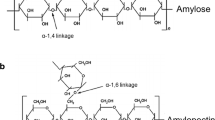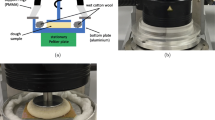Abstract
Assessment of fermentation as the heart of the bread making process is of significant importance. For this mean a variety of methods and devices have already been invented but have always faced drawbacks such as limitation in predicting and monitoring the fermentation in situ, due to fluctuating fermentation conditions. The aim of this study is manufacturing of a system for continuous, accurate and simultaneous monitoring of pressure and temperature of bread dough in real fermentation condition by means of in-contact measurement of dough pressure during fermentation. In this research a new method in terms of dough pressure and temperature measurement during fermentation was designed in which the instrument was given the name of “fermetron”; then its precision and correctness on different flours were validated according to reliable rheological tests using alveograph and rheofermentometer. Given the close trends among parameters of rheofermentometer and alveograph with those of fermetron, its validation in regard to monitoring dough fermentation was confirmed. The tests results, while confirming the accuracy and precision of the fermetron performance, show the significant effect of the flour sample quality on the process of fermentation. Fermetron exhibits the pressure evaluation results graphically. Each graph includes five main parts which is correspondent to dough state in terms of gas production initiation, gas production rate, gas retention, gas release, yeast activity end, and multistage gas release, respectively.








Similar content being viewed by others
References
AACC International. (2009). Approved Methods of Analysis (10th ed.). St Paul, MN: The Association AACC International.
Autio, K., & Laurikainen, T. (1997). Relationships between flour/dough microstructure and dough handling and baking properties. Trends in Food Science and Technology, 8(6), 181–185. https://doi.org/10.1016/s0924-2244(97)01039-x
Babin, P., Della Valle, G., Chiron, H., Cloetens, P., Hoszowska, J., Pernot, P., & Dendievel, R. (2006). Fast X-ray tomography analysis of bubble growth and foam setting during breadmaking. Journal of Cereal Science, 43(3), 393–397. https://doi.org/10.1016/j.jcs.2005.12.002
Bache, I. C., & Donald, A. M. (1998). The structure of the gluten network in dough: A study using environmental scanning electron microscopy. Journal of Cereal Science, 28(2), 127–133. https://doi.org/10.1006/jcrs.1997.0176
Bajd, F., & Serša, I. (2011). Continuous monitoring of dough fermentation and bread baking by magnetic resonance microscopy. Magnetic Resonance Imaging, 29(3), 434–442. https://doi.org/10.1016/j.mri.2010.10.010
Baker, J. C., & Mize, M. D. (1939). Effect of temperature on dough properties I. Cereal Chemistry, 16, 517–533.
Baker, J. C., & Mize, M. D. (1939). Effect of temperature on dough properties II. Cereal Chemistry, 16, 682–695.
Baker, J. C., & Mize, M. D. (1941). The origin of the gas cell in bread dough. Cereal Chemistry, 19, 84–94.
Bloksma, A. H. (1962). Slow creep of wheat flour doughs. Rheologica Acta, 2(3), 217–230. https://doi.org/10.1007/bf01983955
Bloksma, A. H. (1990). Rheology of the breadmaking process. Cereal Foods World, 35(2), 228–236.
Bloksma, A. H. (1990). Dough structure, dough rheology and baking quality. Cereal Foods World, 35(2), 237–244.
Bonny, J. M., Rouille, J., Della Valle, G., Devaux, M. F., Douliez, J. P., & Renou, J. P. (2004). Dynamic magnetic resonance microscopy of flour dough fermentation. Journal of Cereal Science, 22(3), 395–401. https://doi.org/10.1016/j.mri.2004.01.020
Burtle, J. G., & Sullivan, B. (1955). The diffusion of carbon dioxide through fermenting bread sponges. Cereal Chemistry, 32(6), 488–492.
Chin, N. L., & Campbell, G. M. (2005). Dough aeration and rheology: Part 1. Effects of mixing speed and headspace pressure on mechanical development of bread dough. Journal of the Science of Food and Agriculture, 85(13), 2184–2193. https://doi.org/10.1002/jsfa.2236
Chin, N. L., & Campbell, G. M. (2005). Dough aeration and rheology: Part 2. Effects of flour type, mixing speed and total work input on aeration and rheology of bread dough. Journal of the Science of Food and Agriculture, 85(13), 2194–2202. https://doi.org/10.1002/jsfa.2236
Chiotellis, E., & Campbell, G. M. (2003). Proving of bread dough II: Measurement of gas production and retention. Food and Bioproducts Processing, 81(3), 207–216. https://doi.org/10.1205/096030803322437974
Czuchajowska, Z., & Pomeranz, Y. (1993). Gas formation and gas retention. I. The system and methodology. Cereal Foods World, 38, 499–503.
Gan, Z., Ellis, P. R., & Schofield, J. D. (1995). Gas cell stabilization and gas retention in wheat bread dough. Journal of Cereal Science, 21(3), 215–230. https://doi.org/10.1006/jcrs.1995.0025
Grenier, D., Le Ray, D., & Lucas, T. (2010). Combining local pressure and temperature measurements during bread baking: Insights into crust properties and alveolar structure of crumb. Journal of Cereal Science, 52(1), 1–8. https://doi.org/10.1016/j.jcs.2009.09.009
Grenier, D., Lucas, T., & Le Ray, D. (2010). Measurement of local pressure during proving of bread dough sticks: Contribution of surface tension and dough viscosity to gas pressure in bubbles. Journal of Cereal Science, 52(3), 373–377. https://doi.org/10.1016/j.jcs.2010.06.016
Hibberd, G. E., & Wallace, W. J. (1966). Dynamic viscoelastic behaviour of wheat flour doughs. Rheologica Acta, 5(3), 193–198. https://doi.org/10.1007/bf01982426
Hibberd, G. E., & Parker, N. S. (1976). Gas pressure-volume-time relationships in fermenting doughs, I. Rate of production and solubility of carbon dioxide in dough. Cereal Chemistry, 53(3), 338–346.
Hlynka, I., & Anderson, J. A. (1952). Relaxation of tension in stretched dough. Canadian Journal of Technology, 30, 198.
Hrušková, M., Švec, I., & Jirsa, O. (2006). Correlation between milling and baking parameters of wheat varieties. Journal of Food Engineering, 77, 439–444. https://doi.org/10.1016/j.jfoodeng.2005.07.011
Janssen, A. M., Van Vliet, T., & Vereijken, J. M. (1996). Fundamental and empirical rheological behaviour of wheat flour doughs and comparison with bread making performance. Journal of Cereal Science, 23(1), 43–54. https://doi.org/10.1006/jcrs.1996.0004
Jekle, M., & Becker, T. (2011). Implementation of a novel tool to quantify dough microstructure. Procedia Food Science, 1, 1–6. https://doi.org/10.1016/j.profoo.2011.09.001
Jekle, M., & Becker, T. (2011). Dough microstructure: Novel analysis by quantification using confocal laser scanning microscopy. Food Research International, 44(4), 984–991. https://doi.org/10.1016/j.foodres.2011.02.036
Kilborn, R. H., & Preston, K. R. (1981). A dough height tracker and its potential application to the study of dough characteristics. Cereal Chemistry, 58(3), 198–201.
MacRitchie, F. (1980). Studies of gluten protein from wheat flours. Cereal Food World, 32(1), 302–309.
MacRitchie, F. (2010). Concepts in Cereal Chemistry (1st ed.). New York: CRC Press. https://doi.org/10.1201/b15112 Chapter 5.
MacRitchie, F. (2014). Requirements for a test to evaluate bread-making performance. Journal of Cereal Science, 59(1), 1–2. https://doi.org/10.1016/j.jcs.2013.11.001
Marek, C. J., & Bushuk, W. (1967). Study of gas production and retention in doughs with a modified Brabender oven-rise recorder. Cereal Chemistry, 44, 300–307.
Matsumoto, H., Nishiyama, J., & Hlynka, I. (1971). Internal pressure in yeasted dough. Cereal Chemistry, 48, 669–676.
McDermott, E. E. (1980). The rapid non-enzymic determination of damaged starch in flour. Journal of the Science of Food and Agriculture, 31(4), 405–413. https://doi.org/10.1002/jsfa.2740310411
Meshkat, A., Vaezi, M. J., & Babaluo, A. A. (2018). Study the effect of seeding suspension concentration of DD3R particles on the modified surface of Α-Alumina support for preparing DD3R zeolite membrane with high quality. Emerging Science Journal. https://doi.org/10.28991/esj-2018-01127
Owolabi, G. M., Bassim, M. N., Page, J. H., & Scanlon, M. G. (2008). The influence of specific mechanical energy on the ultrasonic characteristics of extruded dough. Journal of Food Engineering, 86(2), 202–206. https://doi.org/10.1016/j.jfoodeng.2007.09.029
Pour-Damanab, A. S., Jafary, A., & Rafiee, S. (2011). Monitoring the dynamic density of dough during fermentation using digital imaging method. Journal of Food Engineering, 107(1), 8–13. https://doi.org/10.1016/j.jfoodeng.2011.06.010
Pomeranz, Y. (1988). Wheat Chemistry and Technology (Vol. 2). (3rd ed). St. Paul, Minnesota: AACC, (Chapter 4). ISBN: 9780913250730.
Romano, A., Toraldo, G., Cavella, S., & Masi, P. (2007). Description of leavening of bread dough with mathematical modelling. Journal of Food Engineering, 83(2), 142–148. https://doi.org/10.1016/j.jfoodeng.2007.02.014
Rosenfeld, E., Beauvoit, B., Blondin, B., & Salmon, J. M. (2003). Oxygen consumption by anaerobic Saccharomyces cerevisiae under enological conditions: Effect on fermentation kinetics. Applied and Environmental Microbiology, 69(1), 113–121. https://doi.org/10.1128/aem.69.1.113-121.2003
Schofield, R. K., & Blair, G. S. (1932). Rapid methods of examining soils. I. measurements of rolling weights. (With three text-figures.). Journal of Agricultural Science, 22(1), 135–144. https://doi.org/10.1017/s0021859600053156
Shah, P., Campbell, G. M., McKee, S. L., & Rielly, C. D. (1998). Proving of bread dough: Modelling the growth of individual bubbles. Food and Bioproducts Processing, 76(2), 73–79. https://doi.org/10.1205/096030898531828
Shakiba, M., Rahgozar, P., Elahi, A. R., & Rahgozar, R. (2018). Effect of activated pozzolan with Ca(OH)2 and nano-SiO2 on microstructure and hydration of high-volume natural pozzolan paste. Civil Engineering Journal, 4(10), 2437. https://doi.org/10.28991/cej-03091171
Skaf, A., Nassar, G., Lefebvre, F., & Nongaillard, B. (2009). A new acoustic technique to monitor bread dough during the fermentation phase. Journal of Food Engineering, 93(3), 365–378. https://doi.org/10.1016/j.jfoodeng.2009.02.005
Sommier, A., Chiron, H., Colonna, P., Della Valle, G., & Rouille, J. (2005). An instrumented pilot scale oven for the study of French bread baking. Journal of Food Engineering, 69(1), 97–106. https://doi.org/10.1016/j.jfoodeng.2004.07.015
Striebig, B., Smitts, E., & Morton, S. (2019). Impact of transportation on carbon dioxide emissions from locally vs. non-locally sourced food. Emerging Science Journal, 3(4), 222–234. https://doi.org/10.28991/esj-2019-01184
Walker, C. E., & Hazelton, J. L. (1996). Dough rheological tests. Cereal Foods World, 41, 23–28.
Zheng, H., Morgenstern, M. P., Campanella, O. H., & Larsen, N. G. (2000). Rheological properties of dough during mechanical dough development. Journal of Cereal Science, 32(3), 293–306. https://doi.org/10.1006/jcrs.2000.0339
Acknowledgements
We would like to acknowledge Isfahan University of Technology for its financial support of this research.
Author information
Authors and Affiliations
Contributions
Nazeri, F. S. is a graduate student (currently Ph.D. student) and the study is her master’s thesis. She carried out all necessary experiments and collected the data. While Dr. Kadivar (supervisor) interpreted the results, Dr. Izadi (co-supervisor) was responsible for designing of the electronic network and control of the measurements.
Corresponding author
Additional information
Publisher's Note
Springer Nature remains neutral with regard to jurisdictional claims in published maps and institutional affiliations.
Rights and permissions
About this article
Cite this article
Nazeri, F.S., Kadivar, M. & Izadi, I. A Sensing System for Continuous Monitoring of Bread Dough During Fermentation. Sens Imaging 22, 14 (2021). https://doi.org/10.1007/s11220-021-00337-3
Received:
Revised:
Accepted:
Published:
DOI: https://doi.org/10.1007/s11220-021-00337-3




